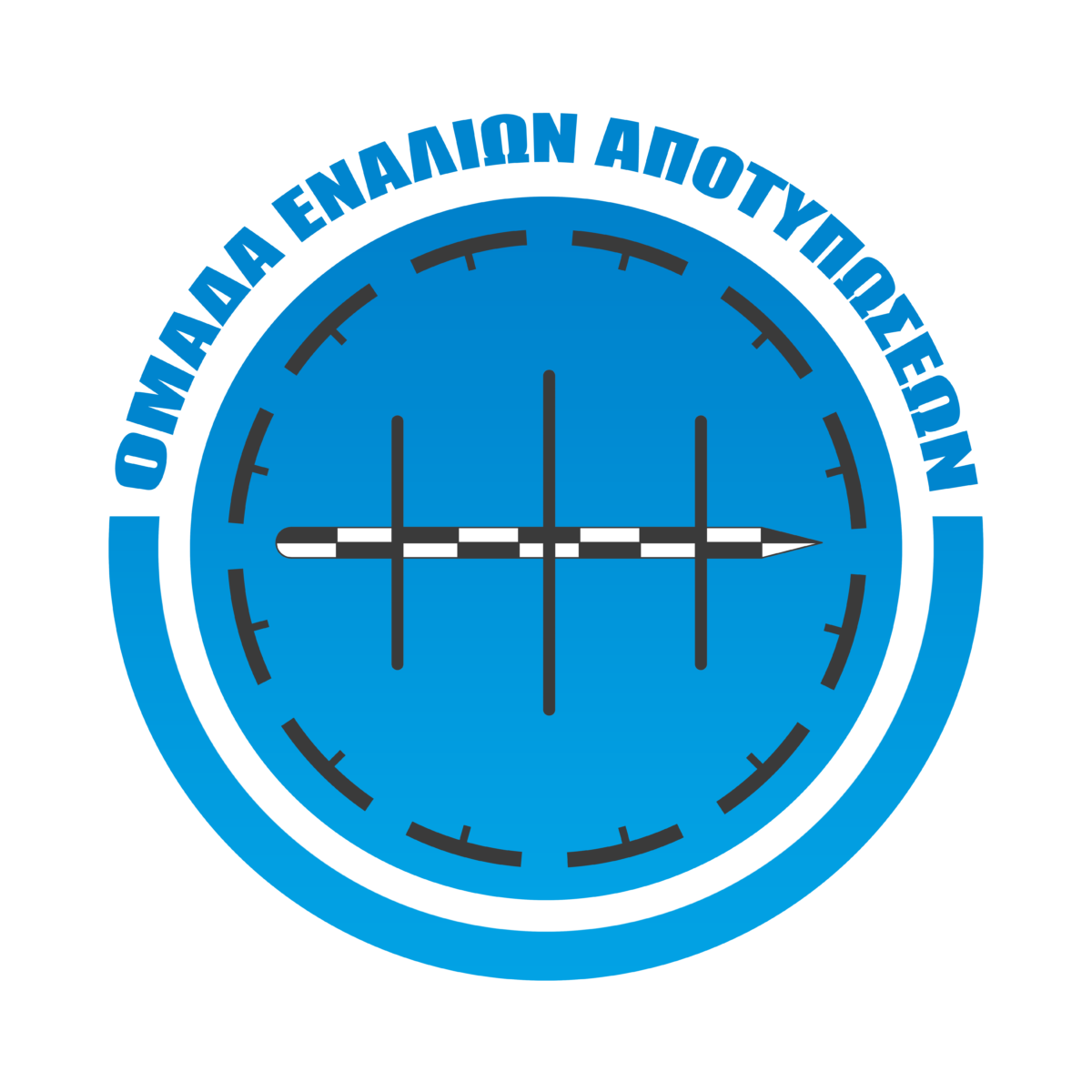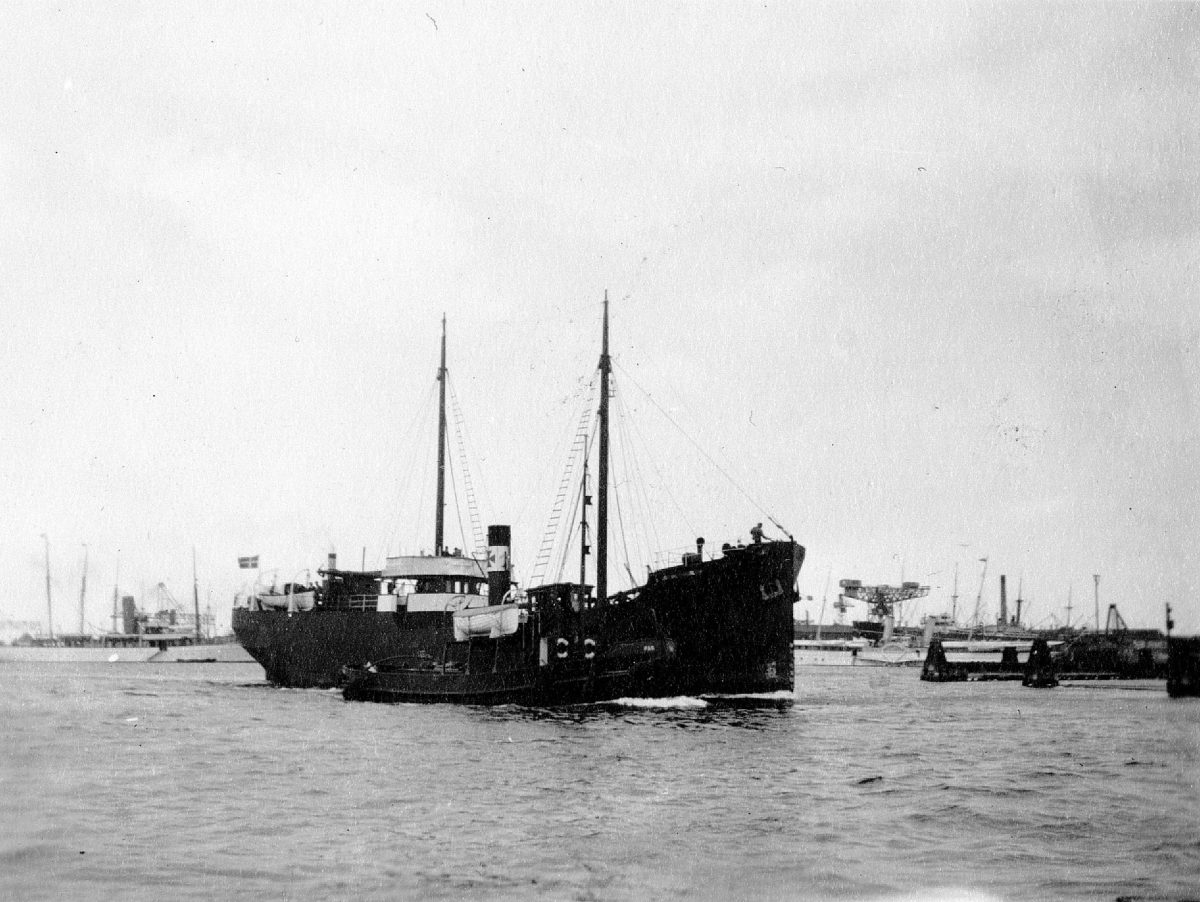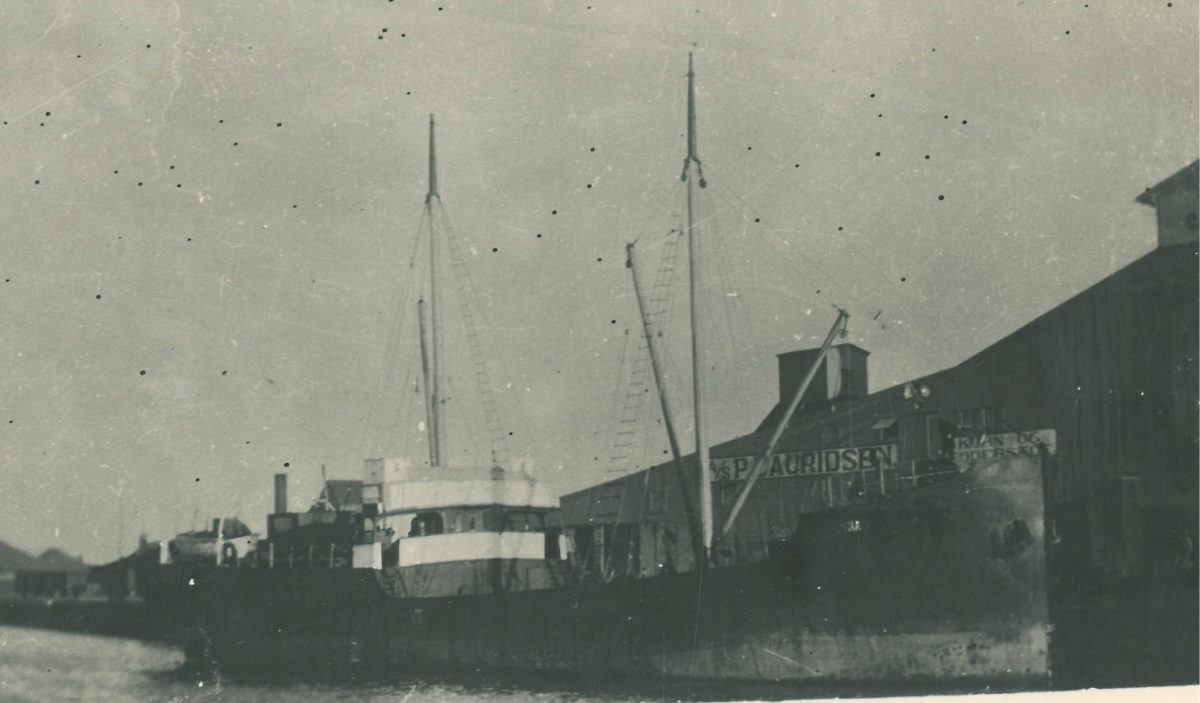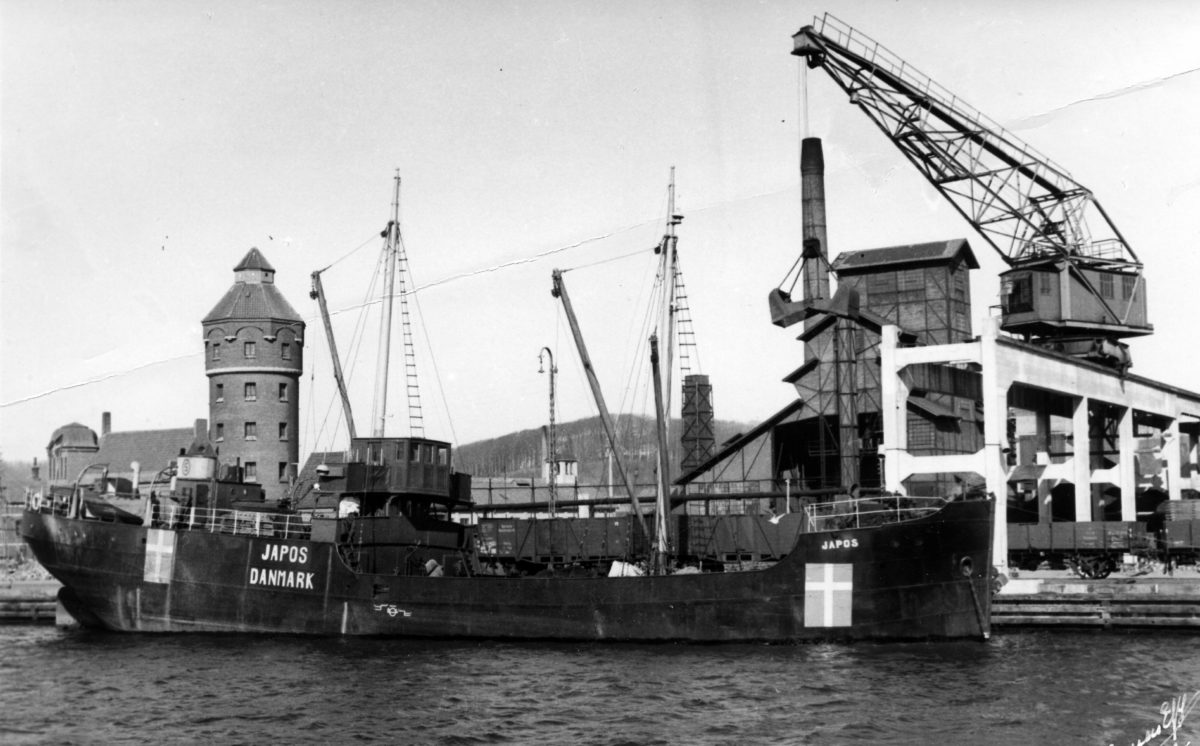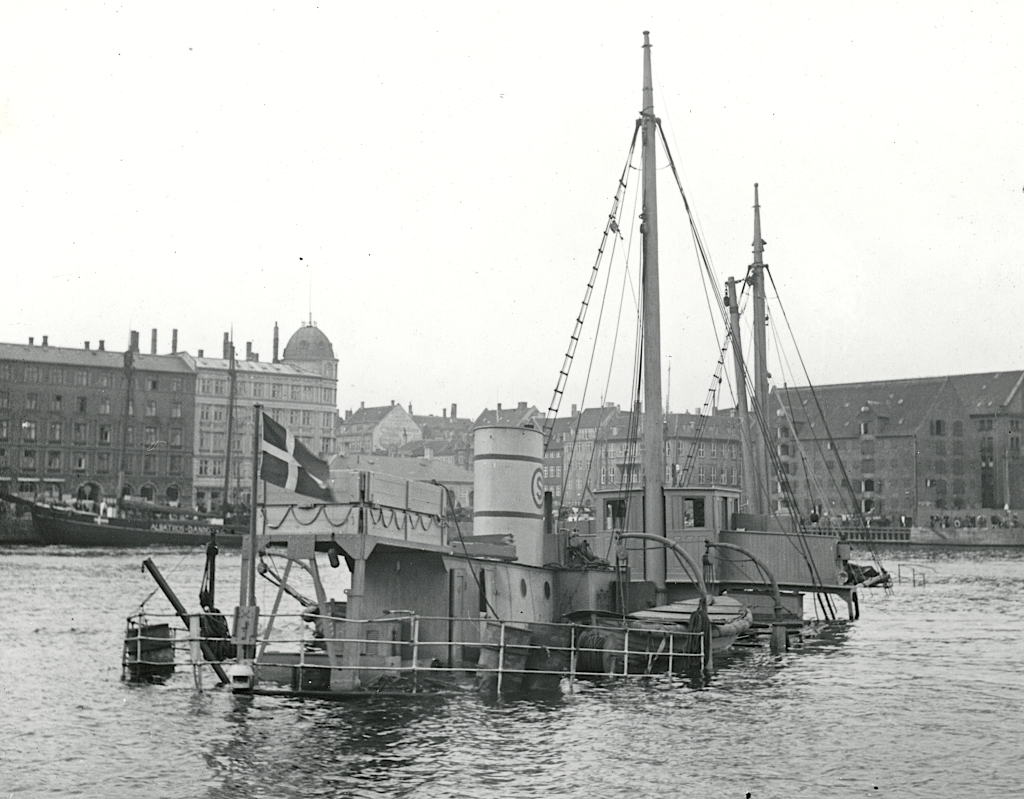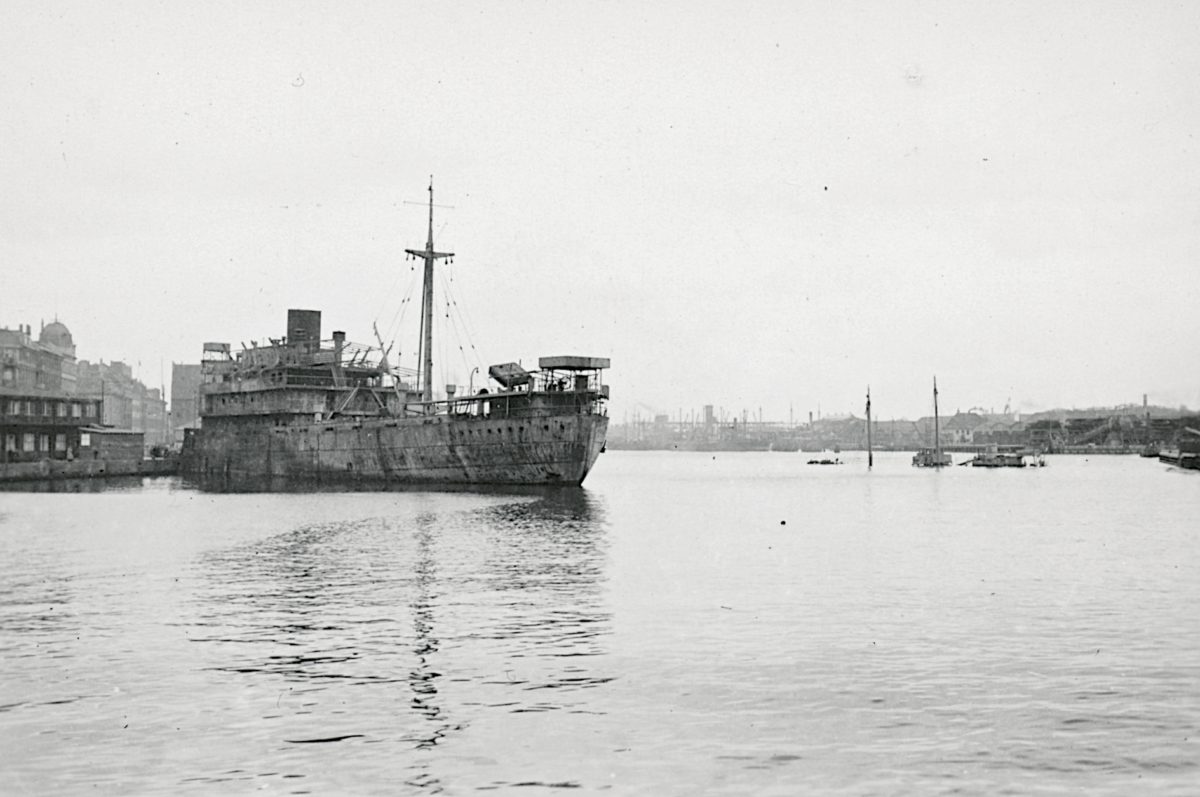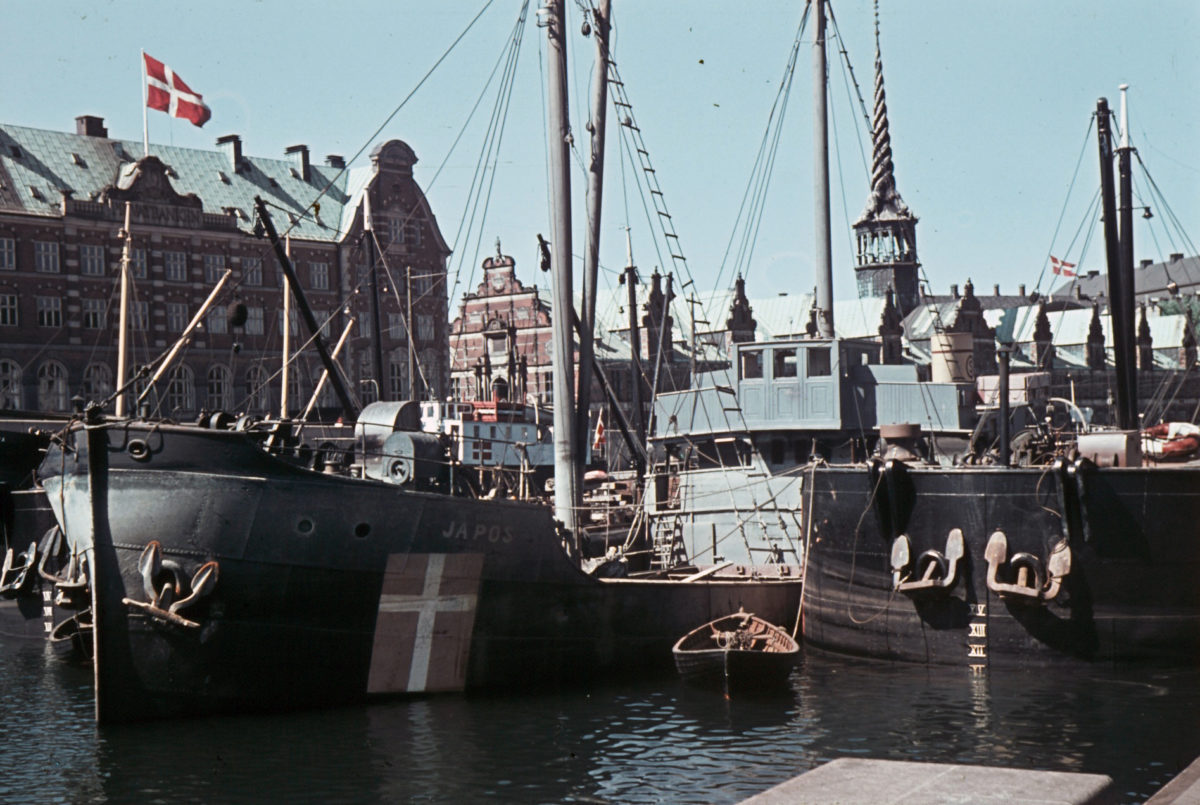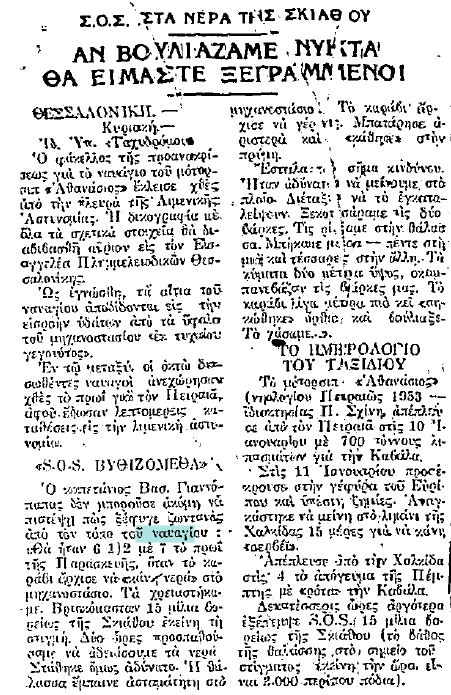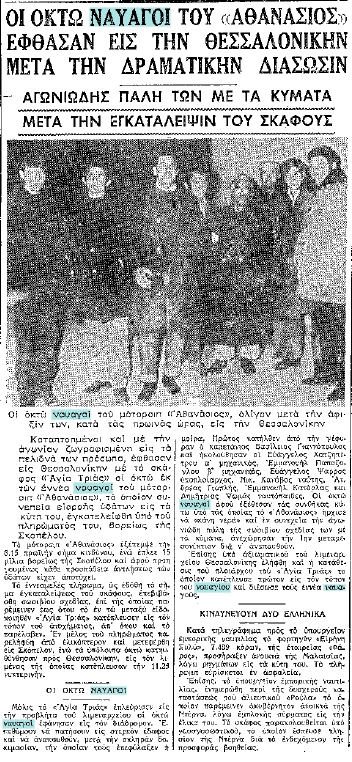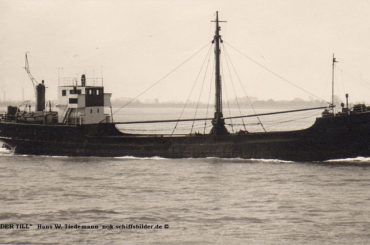The shipwreck of the ATHANASIOS was caused by bad weather in the Sporades in 1968. It was built in Denmark in 1921 and christened the FRODE. It was sold two years later and named the JOHANNE MARGRETHA. In 1929, it was sold and renamed the LIDSØ. In 1933, it was resold and renamed the ASNÆS. In 1939, the ship was renamed once again as the JAPOS but sunk during WWII in Copenhagen. It was recovered after the liberation of Denmark and renamed the HASHLOSHA in 1950. In 1956, it became the EYAL. It was sold in 1959 and ended up in the Greek Seas under its final name, the ATHANASIOS.
The history of the ship
The cargo ship FRODE was built by Marstal Staalskibsbyggeri in Marstal, Denmark. It was driven by a pair of two-stroke Bolinders diesel engines which delivered 120 hp each. The ship was launched in February 1921 and delivered in May 1921 to Nyborg Østfyn A/S.
source: Danmarks Skibliste 1923
The ship was sold in May 1923 to Rederiet Frode A S and was named JOHANNE MARGRETHA.
Το M/S JOHANNE MARGRETHE (source: Maritime Museum of Denmark)
In October 1929, it was sold to Oluf F. Svendsen of Copenhagen and renamed the LIDSØ. In 1933,
it was sold again and renamed the ASNÆS.
M/S ASNÆS (source: Maritime Museum of Denmark)
On 10th March 1937, the ship was travelling from Ballina on the west coast of Ireland to Dublin.
After rounding the lighthouse of South Rock from a distance of one nautical mile, the weather turned foggy. On the morning of the 11th, the weather further deteriorated into a stormy snowstorm, making the sea increasingly unnavigable. It became obvious that the ship would never reach its destination. So, a north-northeast course was set. After a crew meeting held at 10:30 am, it was decided to deliberately beach the ship. It was run aground one nautical mile north of the Drogheda entrance, where it remained stranded. On September 24, the vessel was re-floated with the help of a tug boat.
In 1939, the ship was named JAPOS.
JAPOS (source: Nationalmuseets Samlinger)
During the German withdrawal from Denmark, the ship was sunk by Danish resistance as a measure to block the port of Copenhagen. First they sank the Dutch ship WURI, then the JAPOS as an additional barrier (1), (2).
The JAPOS submerged in Copenhagen port (source : Nationalmuseets Samlinger)
The WURI sunk to the left, with the JAPOS on the right (Source: http://samlinger.natmus.dk)
The JAPOS recovered after Denmark was liberated (source: Nationalmuseets Samlinger)
In 1950, it was sold to Zim Israel Nav. Co. Ltd. and renamed the HASHLOSHA. In 1956, it was sold to Mediterranean Seaway Ltd. and renamed the EYAL. In 1959, it was sold to Rigas Miropoulos and was finally named the ATHANASIOS.
On January 10, 1968, Captain Vasilios Giannopappas sailed from the port of Piraeus to the port of Kavala in northern Greece loaded with 795 tons of fertilizer.
On January 11, while the ship was passing under the Chalkida Bridge, it collided due to strong currents and consequently suffered damage.
The ship remained in Chalkida until January 25. After repairs to its bridge, it faced strong south west winds during its departure and while it continued its way towards its original destination. At 06:00 on the 26th, the first engineer informed the bridge that the engine room was taking in water. Pumps were activated, but the water inflow caused a short-circuit forty-five minutes later. With the pumps gone, the best the captain could do was to make for the nearest shore – which was the island of Skopelos – as soon as possible. However, at 7:45 am, the engines failed due to the ever-rising water level. The ship began tilting, with the waterline submerged at the stern. The captain ordered the lifeboats made ready. He then contacted the control center in Athens by radio. Four crewmen boarded the port lifeboat, while the other five hesitated for fear of overloading it. With the ship threatening to sink under their very feet, the remaining crew scrambled for the starboard lifeboat and boarded. The captain managed to send the radio message: “My crew are in the lifeboats and leaving the ship” before boarding the port lifeboat. The ship continued to tilt backwards, its stern by now fully submerged. The captain ordered the ropes cut and the lifeboats splashed into the sea. Due to the strong swell and the direction of the wind, the lifeboats were directed towards the island of Alonissos. At 09:00 a Greek Royal Air Force plane flew over the ship. Half an hour later, a helicopter came to the rescue, picking up a sailor and headed for Alonissos.
Source: Newspaper Taxydromos 29/1/1968
At 10:00, the ship ‘Agia Trias’ headed for the lifeboats and at 10:30, it picked up the crew of the ‘Athanasios’. Μετά την επιβίβαση, ο καπετάνιος του “Αθανάσιος” ζήτησε από τον πλοίαρχο του “Αγία Τριάς” να πλησιάσει το βυθιζόμενο πλοίο του, που βρισκόταν περίπου 5 ΝΜ μακριά. Upon boarding, the captain of the ‘Athanasios’ asked the captain of the ‘Agia Trias’ to approach his sinking ship, which was about five nautical miles away. Upon arriving at the spot, they noticed that the ship’s tilt was severe and at 11.45, the ship sank.
Source: Macedonia 27/1/1968
References
(1)The Naval War in the Baltic 1939 -1945 by Poul Grooss
(2) http://www.sydhavnenshistorie.dk
(3) http://www.sbib.dk
[*] Ross J. Robertson is an Australian who has lived in Greece for the past thirty years. He has a BSc (Biology) and is an EFL teacher. He is the co-owner of two private English Language Schools and instructs students studying for Michigan and Cambridge University English Language examinations. He has written various English Language Teaching books for the Hellenic American Union (Greece), Longman-Pearson (UK) and Macmillan Education (UK). He published his debut novel (fiction/humour) entitled ‘Spiked! Read Responsibly’ in 2016. Moreover, he has written several spec screenplays and a number of newspaper articles, including an extensive series on the 75th anniversary of the WWII Liberation of Greece. A keen AOW and Nitrox diver, he is also a shipwreck and research enthusiast and has written features for UK Diver Magazine, US Diver and the Australian newspaper, Neos Kosmos. Ross continues to combine his expertise in English with his love of storytelling and local WWII history to produce exciting materials.
